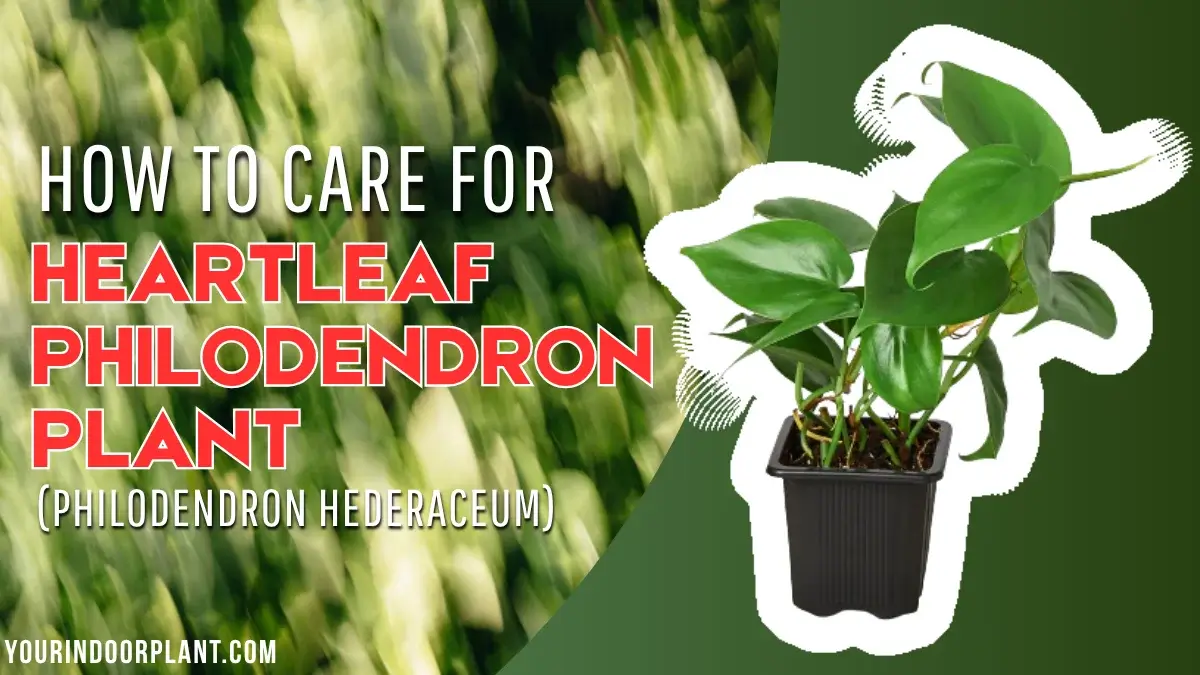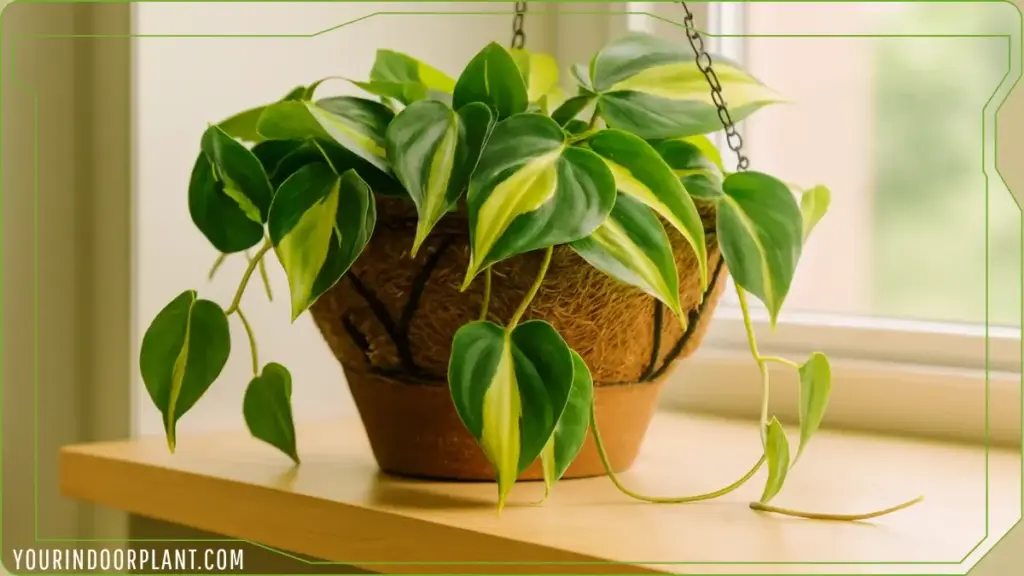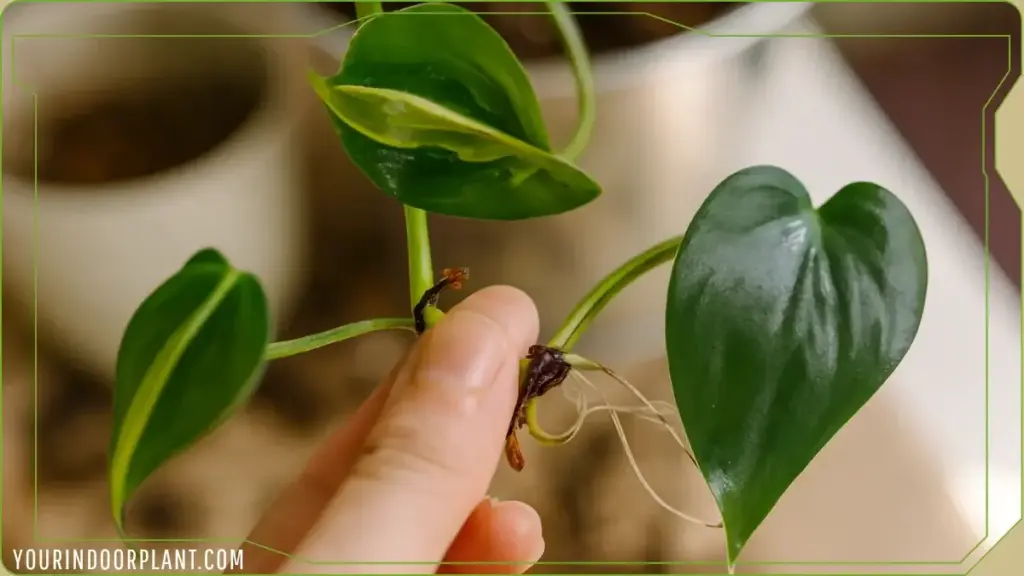Heartleaf Philodendron Plant Care | Philodendron Hederaceum

Philodendron hederaceum (syn. P. scandens), commonly called Heartleaf Philodendron, is a tropical vine with shiny, heart-shaped leaves that’s loved for being both beautiful and easy to care for. Native to Mexico, the West Indies, and Brazil.
If you’re short on time, here’s the quick answer on how to care for this plant: it grows best in the meduim-bright, indirect light conditions (morning sun), evenly moist but well-draining soil, and in warm, mild climates but is most often kept as a houseplant where it can trail from shelves or climb up supports. Occasional pruning, and repotting every few years. Like other philodendrons, it’s toxic if eaten, so keep it out of reach of pets and kids.
Now let’s dive deeper, because this plant deserves more than just the basics.
| Common Names | Heartleaf Philodendron, Sweetheart Plant |
| Scientific Name | Philodendron hederaceum |
| Family | Araceae |
| Popular varieties | Brasil, Micans, and Lemon Lime |
| Origin | Central America and the West Indies |
| Growth Habit | Trailing or climbing vine |
| Growth Speed | In the right conditions, these fast‑growing plants can easily establish vines that stretch 4 feet (1.2 m) or longer. |
| Lifespan | With consistent care, can thrive indoors for 20 years or more |
| Light | Bright, indirect light; avoid direct sun to prevent leaf scorch |
| Watering | Water when the top 1–2 inches of soil are dry; allow slight drying between waterings to prevent root rot |
| Humidity | Prefers high humidity but tolerates average household levels; misting or pebble tray can help |
| Soil | Well-draining potting mix with perlite or orchid bark. Acidic, neutral |
| Fertilizer | Feed monthly in spring and summer with a balanced liquid fertilizer; do not fertilize in winter |
| Temperature | 65–85°F (18–29°C); avoid cold drafts |
| Pruning | Trim stems after a leaf node to encourage bushier growth and maintain shape |
| Pests | Can be affected by fungus gnats, spider mites, and thrips |
| Toxicity | Toxic if ingested by pets or children; keep out of reach |
| Propagation | Stem cuttings root easily in water or moist soil within a few weeks |
A Plant That Loves to Be Overlooked (Almost)
Some houseplants sulk if you forget them for a week. Heartleaf philodendron? It forgives. I’ve had one trailing across my bookshelf for years, and even after a missed watering or two, it bounces back with fresh, glossy leaves. That resilience is part of why it’s often called a “gateway plant” for new collectors.
But don’t mistake “easy” for “carefree.” A few small adjustments can turn a decent-looking philodendron into a lush, cascading showpiece.
The Essentials of Heart Leaf Philodendron Care
1. Light: Gentle Rays, Not Harsh Sun
Heartleaf philodendrons grow best in meduim-bright, indirect light — such as gentle morning sun filtered through sheer curtains, blinds, or reflected off a nearby wall or mirror— and, as the University of Florida IFAS Extension notes, they’re flexible enough to tolerate a range of conditions from soft, diffused light to partial shade.
Too much light will scorch leaves, causing them to turn pale, yellow, crisp, or curled, while too little light leads to leggy, sparse growth and leaf drop.
For low‑light spaces, move the plant closer to a brighter window with indirect light to encourage fuller growth. In high‑light rooms, shift it back or diffuse the rays; east‑ or west‑facing windows with filtered light are ideal.

2. Watering: The “Finger Test” Never Fails
I’ve tried moisture meters, schedules, even apps. But the most reliable method? Stick your finger an inch into the soil. If it feels dry, water thoroughly until it drains from the bottom.
- Frequency: About once a week in summer, less in winter.
- Warning sign: Yellow leaves often mean overwatering, not thirst.
I like to let mine dry slightly between waterings — it keeps the roots healthy and prevents that dreaded soggy-soil smell.
3. Soil & Potting: Keep It Loose and Airy
Heartleaf philodendrons aren’t picky, but they do hate compacted soil. A chunky, well-draining mix is best.
- DIY blend: 2 parts potting soil, 1 part perlite, 1 part orchid bark.
- Repotting: Every 2–3 years, or when roots peek out of the drainage holes.
This plant doesn’t mind being a little root-bound, so don’t rush to repot unless it’s truly cramped.
3. Humidity & Temperature: Think Tropical
Coming from Central and South America, these plants are happiest in warm, humid air.
- Ideal range: 65–85°F (18–29°C).
- Humidity: 40–60% is fine, but they’ll love you for a pebble tray or humidifier.
- Drafts: Keep away from cold windows or AC vents.
In my Portland home, winter heating dries the air, so I group my philodendron with other plants — they create a little microclimate together.
4. Fertilizer: A Gentle Boost
During spring and summer, feed monthly with a balanced liquid fertilizer at half strength. Skip winter feedings when growth naturally slows.
I’ve noticed that too much fertilizer can cause salt buildup, leaving white crust on the soil surface. If that happens, flush the pot with water to reset things.
5. Pruning & Training: Shape It Your Way
One of the joys of heartleaf philodendron is its flexibility. Let it trail, or train it to climb a moss pole for bigger leaves.
“I tested moss poles vs. simple trellises — the moss-pole plant produced 30% larger leaves within two months.”
- Pruning: Snip leggy stems just above a leaf node.
- Propagation: Those cuttings root easily in water or soil — a perfect way to share with friends.

I often refresh older plants by trimming and replanting cuttings, which keeps the foliage dense and youthful. In my experience, trimming long vines back by one‑third each spring encourages thicker leaf growth — often more effective than fertilizing alone.
Common Issues (and How to Fix Them)
- Yellow leaves: Usually overwatering.
- Brown tips: Low humidity or inconsistent watering.
- Leggy growth: Not enough light.
- Pests: Rare, but watch for spider mites in dry conditions.
A quick shower under the sink often clears dust and discourages pests. Read our easy solutions to treat leaf spot on Philodendron.
FAQs
-
Is heartleaf philodendron toxic to pets?
Yes. According to the ASPCA, heartleaf philodendron is toxic to cats, dogs, and horses because it contains insoluble calcium oxalates that cause irritation if ingested.
-
How fast does it grow?
With good light and care, expect several inches of new growth each week during spring and summer.
-
Can it live in low light?
It will survive, but growth slows and leaves may get smaller. For best results, give it bright, indirect light.
-
Do I need to mist my philodendron?
Misting isn’t essential, but it can help in dry climates. A humidifier is more effective for consistent moisture.
-
What’s the difference between philodendron and pothos?
They look similar, but pothos leaves are thicker and waxier, while philodendron leaves are softer and more heart-shaped.
Final Thoughts
Caring for a heartleaf philodendron is less about strict rules and more about gentle attention. Give it light that feels like dappled shade, water when the soil tells you it’s ready, and let it sprawl or climb as it pleases.
Every time I glance at mine, trailing gracefully across a shelf, I’m reminded that some of the most rewarding plants are also the most forgiving. And maybe that’s why this little heart-shaped beauty has become a classic in homes around the world.
Related Reads
If you’re enjoying this guide, you might also want to read:
